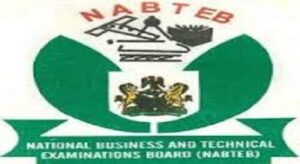NABTEB Basic Electricity Syllabus And Hot Topics To Read For NABTEB: If you have been wondering how to get NABTEB Syllabus Online Plus hot topics you are to focus on in Basic Electricity then Guide is for you.
Recommended
The aim of the National Business and Technical Examinations Board (NABTEB) Basic Electricity Syllabus is to ensure that you are well prepared for the exam. You may also click here for how to Pass 2022 NABTEB once and for all without Expo.
NABTEB Basic Electricity Syllabus
There will be two papers, both of which will be taken.
PAPER I:
This will consist of two sections, which are, Section A (Objective) and Section B (essay)
SECTION A: This will comprise of 40 multiple-choice objective questions to be answered in 40 minutes and the paper carries 40 marks.
SECTION B: This will comprise of 7 essay questions our of which the candidates are to answer 5 questions in 2 hours. This paper carries 60 marks.
PAPER II:
PRACTICAL: This will comprise of two practical questions for 3 hours. This paper carries 100 marks.
Recommended: Nabteb syllabus for all subjects
|
S/N |
TOPICS/OBJECTIVE |
CONTENT | ACTIVITIES/REMARK |
|
1. |
Structure of Matter
|
The movement of holes and electrons in a material.
– Holes (+ve charge) – Electron (-ve charge) – Like charge repel6 Elementary concepts of electrons and electron flow. Electric current as a flow of electrons. 1. Difference between insulators and conductors. |
|
|
1. |
Conductors and Insulators |
1. Examples/Types |
1. Examine various types of conductors and insulators. |
|
2. |
OHM’s Law and its Application
|
RT R1 R2 R3 … Rn |
|
Determine the value of the:
a. total resistance of
resistors in series parallel and series parallel connection.
b. total voltage of batteries in series, parallel and series parallel connection
c. total inductance of inductors in series, and parallel and series parallel.
d. total capacitance of capacitors in
series, parallel and series-parallel. Determine the value of inductance and capacitance connected in series and parallel. Determine values of current junction. determine that total Emf and Pds is equal to zero.
|
S/N |
TOPICS/OBJECTIVE |
CONTENT |
ACTIVITIES/REMARK |
| and its advantages over Ohms Laws. IT = I1 + I2 + I3 ET = E1 + E2 + E310. Use Vector diagram to explain the current law e.g. I1 + I2 + I3 = I3 + I4 |
|||
|
4. |
Resistors, Capacitors and Inductors |
|
|
|
5. |
Values and Functions of Resistors |
|
|
|
S/N |
TOPICS/OBJECTIVE |
CONTENT |
ACTIVITIES/REMARK |
|
6. |
Electromotive Force (E.M.F.)
|
6.
7. Reduction in battery’s current output |
|
|
7. |
AC & DC
|
|
|
|
S/N |
TOPICS/OBJECTIVE |
CONTENT |
ACTIVITIES/REMARK |
|
value and frequency of wave.
|
||
|
8. |
Electrical Circuits Analyse, connect and carry out simple calculations on simple electrical circuits. |
|
|
|
S/N |
TOPICS/OBJECTIVE |
CONTENT |
ACTIVITIES/REMARK |
ii. Parallel circuits.
|
|
||
|
9. |
Indicating Instruments and Measuring Instruments |
1. Functional part of multi- meter:
|
1. Discuss the functional parts of a multimeter. 2. Connect: |
|
S/N |
TOPICS/OBJECTIVE |
CONTENT |
ACTIVITIES/REMARK |
|
Explain the operation, uses and limitations of indicating and measuring instruments and operate them. |
iii. Ohmeter
|
to measure the current flowing in AC and DC circuits. ii. Voltmeter in parallel to measure the voltage flowing in AC and DC circuit.
|
|
|
10. |
Magnetism, induction and Transformers
|
i. ii. iii. mutual inductance conservation of energy operation of |
|
|
S/N |
TOPICS/OBJECTIVE |
CONTENT |
ACTIVITIES/REMARK |
|
transformers ”“ magnetic circuit (core) iv. primary windings ”“ Turns ratio-cooling
|
|
||
|
11. |
Fluxes, Solders and Soldering |
|
|
|
S/N |
TOPICS/OBJECTIVE |
CONTENT |
ACTIVITIES/REMARK |
|
of:
iii. plot and ladle
|
||
|
12. |
Electronic Signs and Symbols |
|
|
|
13. |
Wiring and Connection of Electrical/Electronic Component Wire different types of plugs and assemble components on a chassis |
|
|

Josiah Udeh says
No pdf for basic electricity?